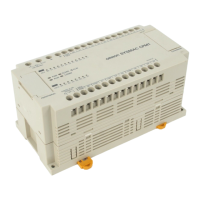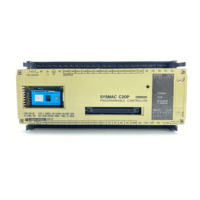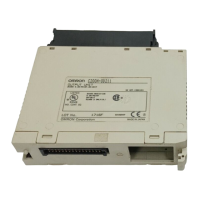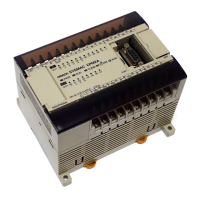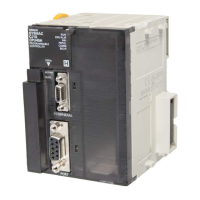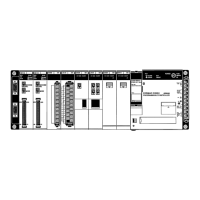444
The execution flow for this example would be as shown below:
000000 ON A
000000 ON
000001 ON B
000001 OFF
C
C
Initial execution
The following example would work similarly, except that execution of
WAIT<005> would be based on an AND between the status of CIO 000001
and CIO 000002.
LD
AND
WAIT<005>
A
B
BEND<001>
C
000001
000002
Address Instruction Operands
000000 LD 000000
000001 BPRG(250) 01
A
000200 LD 000001
000201 AND 000002
000202 WAIT<005>
B
000300 BEND<001>
C
(250)
BPRG 01
0000
00
5-38-5 CONDITIONAL BLOCK EXIT: EXIT<006>
B: Bit CIO, G, A, T, C
Operand Data AreaLadder Symbol
EXIT<006>
EXIT<006> B
EXIT<006> NOT B
EXIT<006> and EXIT<006> NOT allow you to skip the portion of block pro-
gram from EXIT<006> to BEND<001> while B is ON or if a bit is not speci-
fied, while the execution condition is ON.
As long of the execution condition or operand bit of EXIT<006> is OFF, or the
operand bit of EXIT<006> NOT is ON, the block program will be executed as
normal. If the execution condition or operand bit of EXIT<006> is ON or the
operand bit of EXIT<006> NOT is OFF, only the part of the block program up
to the EXIT<006> or EXIT<006> NOT instruction will be executed and the
rest of the block program through BEND<001> will be skipped. If a bit is not
programmed for EXIT<006>, then the same operation will occur, but it will be
based on the status of the execution condition for EXIT<006>.
EXIT<006> NOT cannot be used without an operand bit.
Description
Precautions
(CVM1 V2)
Block Programming Instructions Section 5-38
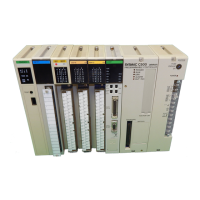
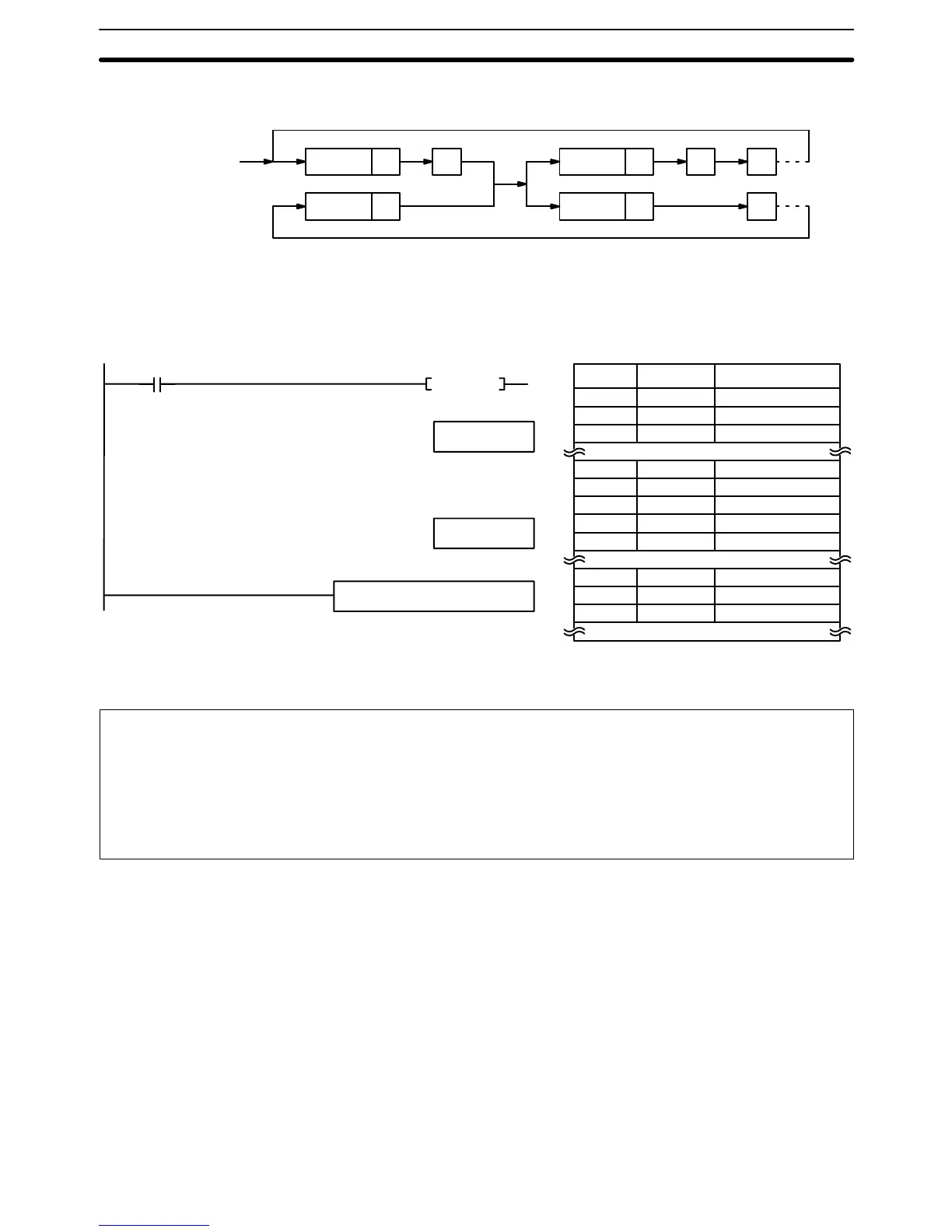